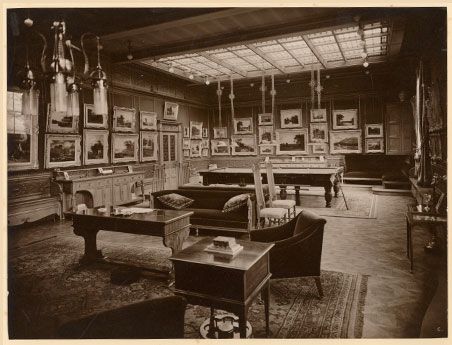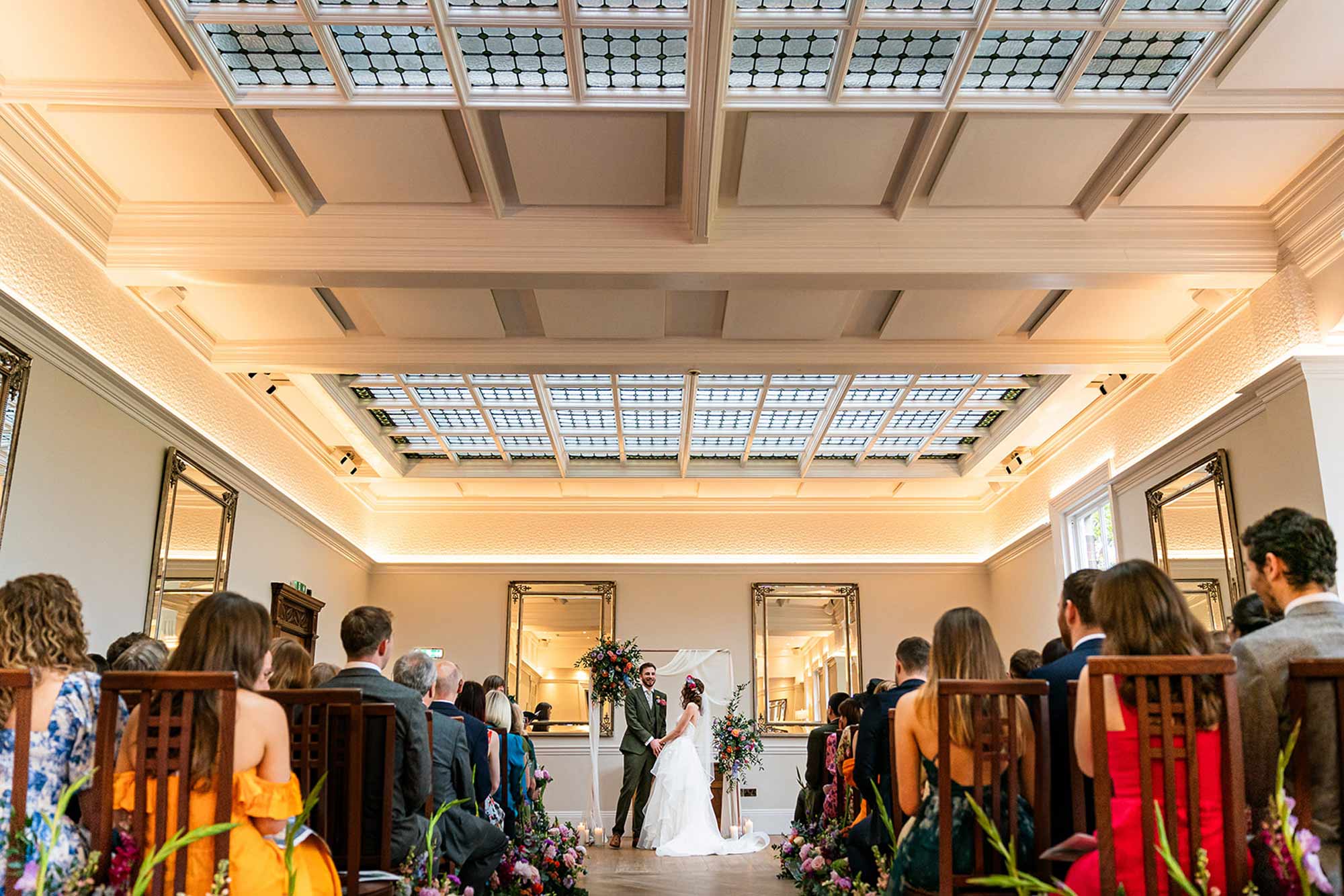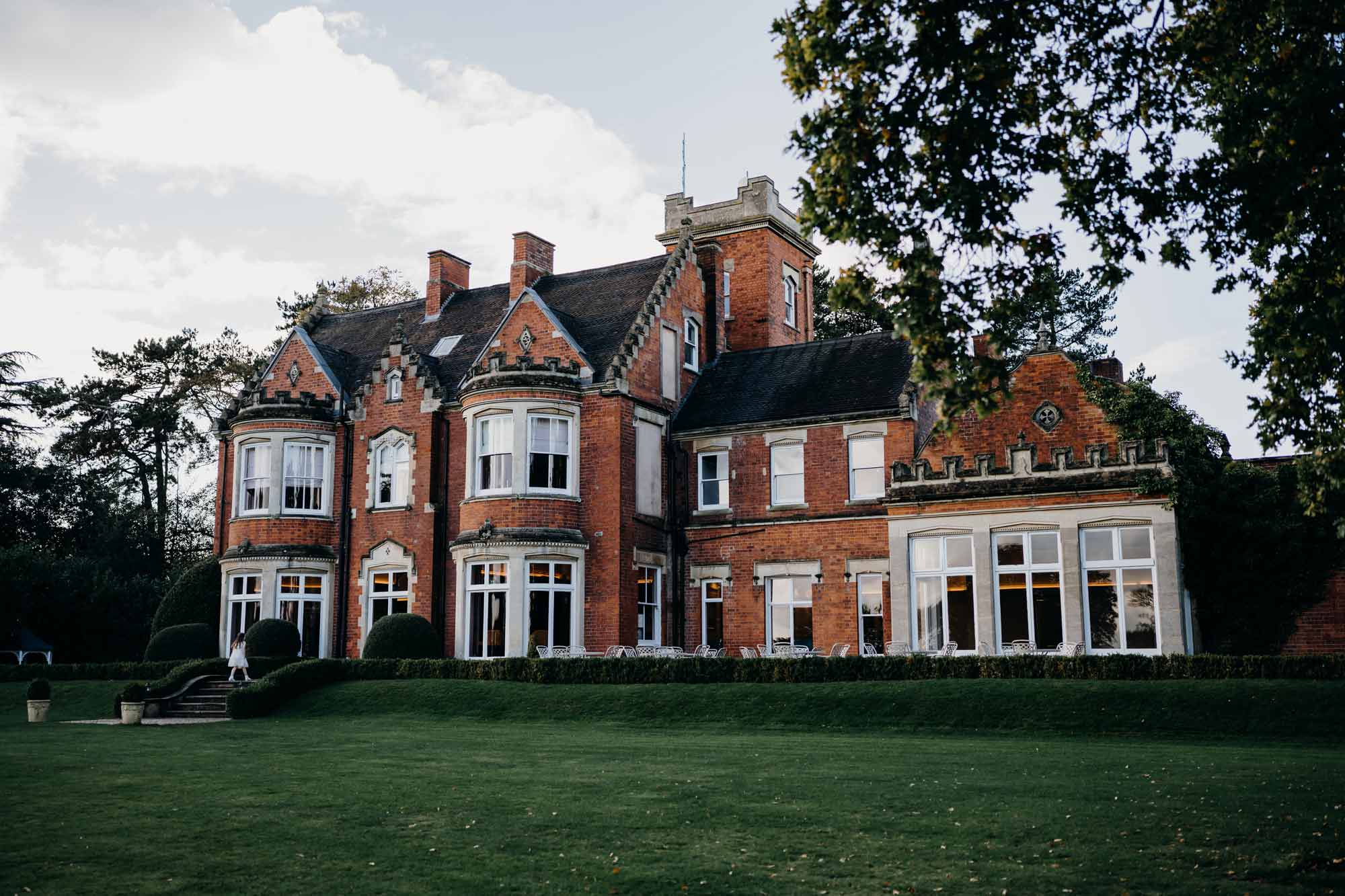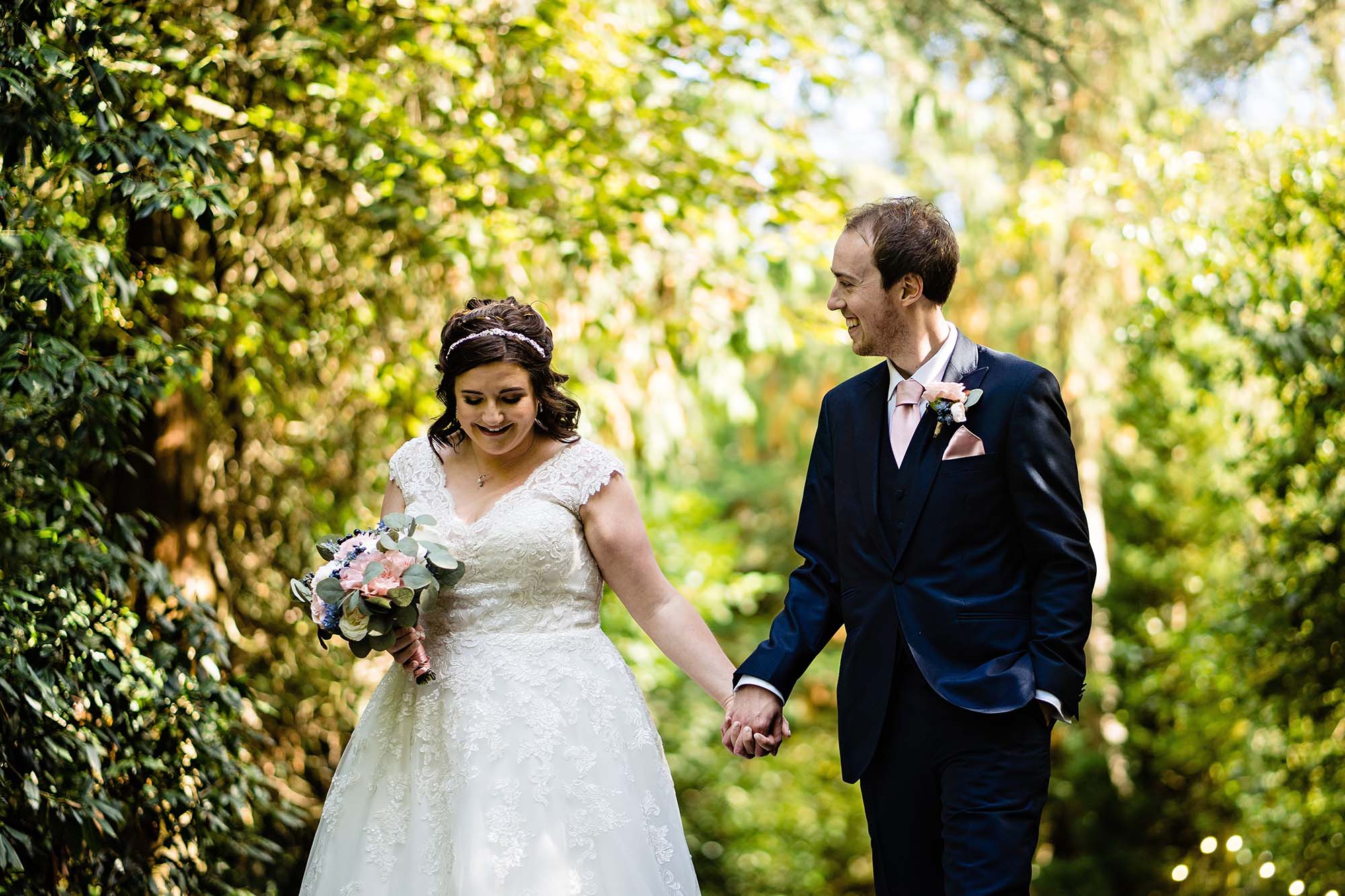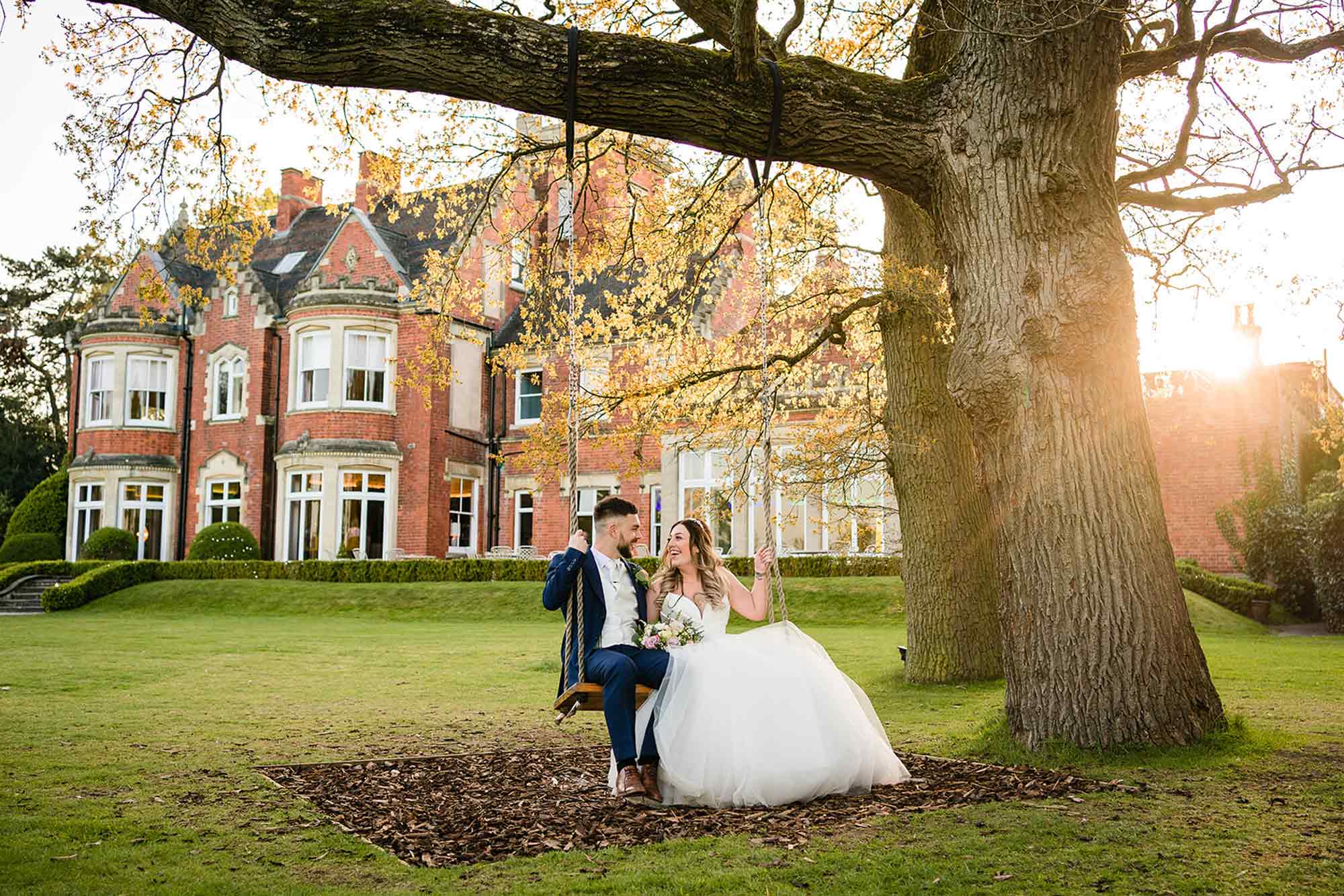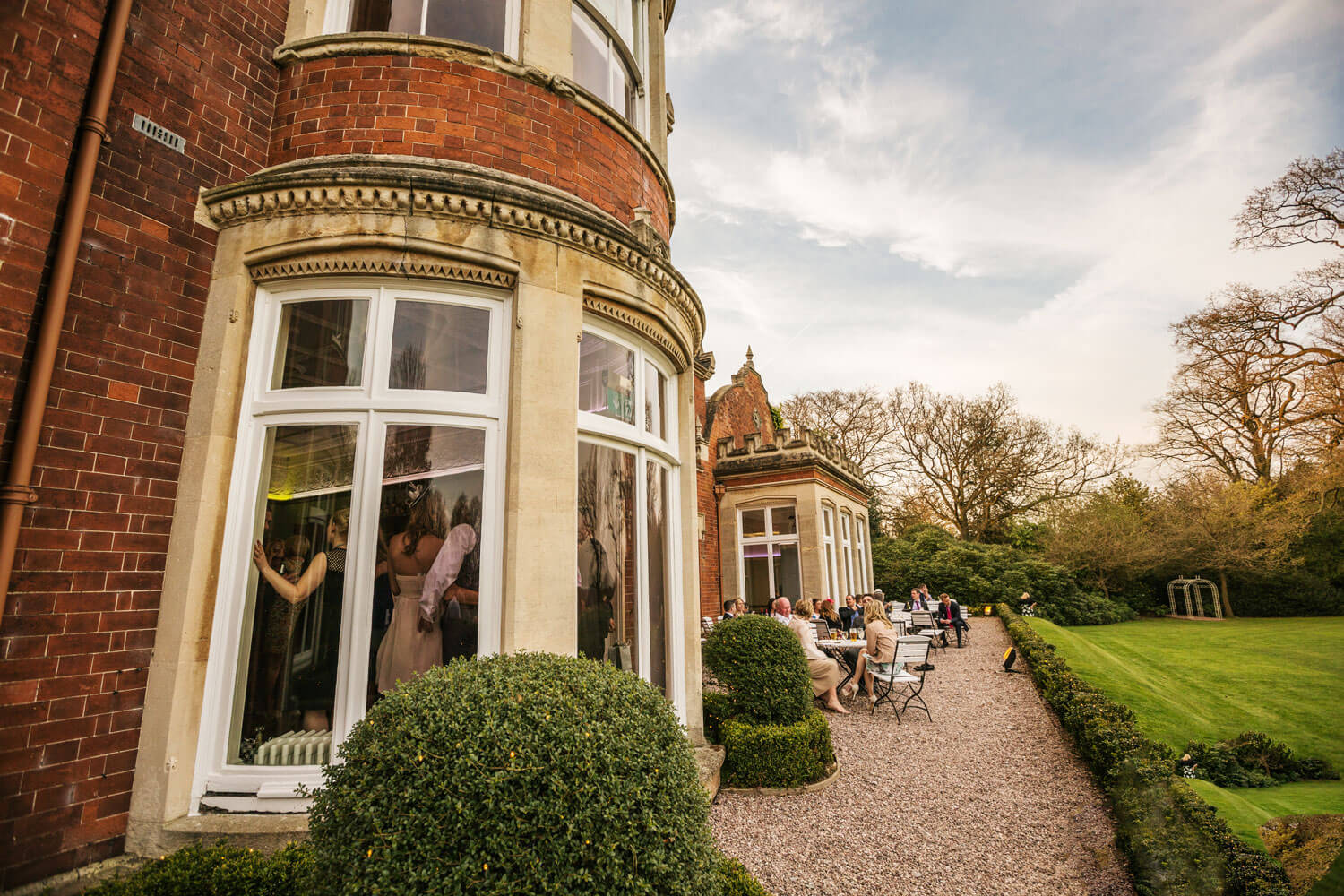Historic Wedding Venue
REASONS FOR DESIGNATION
Pendrell Hall, Wood Road, Codsall, built in 1870 and adapted in 1909/10 by George Faulkner Armitage is designated at Grade II for the following principal reasons:
* Architectural: The initial design of the hall has architectural quality in its grouping and use of materials and craftsmanship. The additions by the accomplished artisan designer G. F. Armitage add considerably to its interest.
* Interiors: The fittings are of a high quality, representative of an artist craftsman who had honed his small country house technique.
* Intactness: The building is well-preserved, especially considering its long use as an educational establishment.
* Stylistic Influence: The form, methods and ideals of Armitage's work, of which this a late but assured example, influenced the work of other, well-regarded architects: Barry Parker, Arthur Simpson, and contemporaries.
Pendrell Hall, Codsall
Description: Pendrell Hall
Grade: II
Date Listed: 18 February 2011
English Heritage Building ID: 1396468
OS Grid Reference: SJ8504304764
OS Grid Coordinates: 385043, 304764
Latitude/Longitude: 52.6404, -2.2225
Locality: Codsall
Local Authority: South Staffordshire District Council
County: Staffordshire
Country: England
Postcode: WV8 1QP
Listing Text
CODSALL
486/0/10015 WOOD ROAD
18-FEB-11 Pendrell Hall
II
A country house, remodelled and extended in 1909/10 by George Faulkner Armitage, and with later adaptations.
MATERIALS: Red brick with stone dressings and details, under pitched, tile roofs with red brick stacks.
PLAN: Roughly rectangular on plan, and of two-storeys with attic and basement. The main hall is entered through a porch and lobby. Principal rooms lead off the hall and there is a main stair to the rear. Behind the stair is the billiard room in a single-storey range, partially subdivided, and with further service ranges. First-floor bedrooms in the main range reflect the plan of the rooms below, although there have been some alterations to the layout. The main range also has a cellar and attic floor. Stairs from the attic lead up the tower.
EXTERIOR: The main range is two-storeys with attic and basement. It has two symmetrical garden fronts and an asymmetrical entrance front, with a tower as the lynch pin of the composition. The principal garden front faces east and is of three, symmetrical, gabled bays. The narrow central bay has glazed double doors to the ground floor, with window above and a small attic window under a stepped gable. The openings have keyed, stone surrounds and decorative, projecting hood moulds. The bays to either side have castellated, two-storey, bow windows with stone dressings, and decorative stone vents in the gable ends. Attached, and set back, to the north is a three-bay range, with a second-storey constructed in 1910, and with regularly spaced timber sashes under stone heads. Further north is the attached façade of the single-storey billiard room, with a projecting rectangular bay, which has a castellated parapet. The three bays to the left stand forward of the building line in a square bay arrangement, and have three full-height windows with stone surrounds under a shaped brick gable with stone dressings. The bay to the right is set back and has a sash window, centrally-positioned, under a stone head and hood mould.
The second garden front, facing south, is also of three symmetrical bays with two single-storey, castellated bow windows to left and right and a later, canted bay window with a plain parapet to the centre. The windows to the upper floors have keyed, stone surrounds. The narrow, central bay has a diamond window in the gable. The gables to either side are stepped. An asymmetrical entrance front faces west, with a principal entrance in the centre-right bay with decorative surround of 1910, and a tall stair window above. To the left of the door, the range is extended with a two-light window to the first-floor and a castellated parapet above. The bays to the left are set back with stone-fenestrated windows to both floors, with a variation of treatments. A first-floor plinth marks the former roof line of a servant's hall that was removed in the 1910 remodelling of the building. The right bay has a gabled end with mullioned attic lights. A square tower, of red brick, and with stone parapet, rises behind the gable end. Further left along the west elevation is a C19 kitchen wall and C19/ C20 kitchen ranges behind. The roofs of Pendrell Hall are covered in clay tile, in some cases with fish-scale tiles, and there are stone finials and rose motifs on some of the lead flashings. Some brick stacks have been shortened, others retain stone detailing and lead pots.
The grounds retain their original paved terrace of 1870 to the principal garden front, with stone steps and coped walls. The main door has a short, paved entranceway with large stone ball finials and low wall, altered in the C21 to create a ramp access. The wider landscape was reworked in 1909/10 with the addition of a sandstone lodge at the main entrance, not of special interest. The original gate piers and stone garden wall survive along Wood Road. A stone sundial with brass plate of 1909/10 stands on the south lawn.
INTERIOR: An internal porch from the west door leads to a front lobby, with a cloakroom to the left. The lobby opens into a large main hall, reconfigured and panelled in 1909/10, with an elaborate carved arcade, doors to four rooms, a corridor to the north end of the house, and a staircase. There is a fireplace with ornate chimneypiece at the north end. The first principal room from the hall, formerly the dining room, has a timber inglenook, with chimneypiece, decorative ceilings and wall treatments, a panelled bow window and parquet flooring. The morning room is less lavishly detailed with moulded ceiling cornice and a plain timber chimneypiece. The north wall of the drawing room has been opened up to accommodate part of the former entrance hall and the former front door. The opening is lined with inlaid, carved panelling, matching the chimneypiece on the west wall, which incorporates timber overmantel and panelled units to either side. The fourth doorway leads into the former library of 1870/ dining room of 1910. This is fitted with a chimneypiece and overmantel, decorative ceiling and frieze, and a panelled bow window.
The north end of the hall has a panelled corridor passing to the right of the stair. A doorway under the stair leads to extensive compartmentalised cellarage. A doorway in the north wall leads to the former Small Library of 1870, converted to a rear hall in 1910. There is a door to the service range opposite doors to the serving room and school room. Steps lead down to the billiard room entrance. The former serving room has been converted to toilet facilities. The school room has a marble/ stone chimneypiece and modern subdivisions. The stairway down to the billiard room has been repositioned against one wall, and retains urn finials and barleysugar balusters that match the main stair. The doorway through to the billiard room has a reeded case and inscribed in the lintel is: ARS LONGA, VITA BREVIS. The doors to the billiard room have stained glass upper panels and brass fittings. The billiard is a long rectangular room with a raised section, with balustrade, in a square bay that projects into the garden terrace. The room is fitted with timber seating along some walls, parquet floors, decorative dado panels and friezes, and extensive rooflights. Behind the billiard room is the service range with modern kitchen facilities, scullery, corridor and a plain back stair. The rear corridor has an encaustic tile floor, and a rear room has a stone/ marble chimneypiece similar to that in the school room.
The staircase from the hall has thick carved newels with urn finials, and barleysugar balusters. The main flight turns in a dog-leg to the first-floor chambers, and has an additional, short flight from the half-landing to the rear service range. The first-floor of the principal range has a central landing with panelled arches to corridors either side, and bedrooms leading from them. Above the landing is a former lightwell with rose motifs in stained glass. The bedrooms are mainly in their original configuration, with chimneypieces and door furniture of 1909/10, and cornices. The rooms at the west end were reconfigured in 1910 and later. The main bedroom has a heavy ceiling cornice, and an inserted doorway leading to a late-C20 fire escape. A doorway to the bathroom has been sealed. Windows to the first floor are mainly timber sashes, although some in the south-facing bedrooms are metal with brass catches. The rear rooms in the service range, and in the attic floor, are more modestly fitted but retain chimneypieces in some rooms. One room has a chamfered and stopped beam. The stair to the tower has its original balustrade and doors.
HISTORY: Pendrell Hall was built as Pendryl Hall on a new site in 1870 for Edward Viles, a writer and publisher of Victorian short stories and serials. Viles experimented in micro-photography and the rear service ranges originally included a studio, laboratory and dark rooms. He was well-regarded in the field and his articles were published in many photography journals of the1870s. In 1879, Viles rented the hall to prominent local businessman Richard Holt Briscoe for the use of his daughter Constance, wife of Walter Giffard of Chillington Hall. The building is shown on the First Edition Ordnance Survey Map of 1882. The building remained the residence of the Giffards until 1909, the time of Richard Briscoe's death. That year, the hall was bought by Frank Gaskell, the third son of the industrialist and art collector Holbrook Gaskell, and the house and grounds were remodelled by George Faulkner Armitage (1849-1937). The works of 1909/10 included the rebuilding of the rear and service wings, the reordering of some rooms, the installation of panelling, floor coverings, decorative ceilings and chimneypieces. The Gaskell family sold the building to Staffordshire County Council in 1955, and it was opened as a residential adult education college in 1961. Some internal alterations were made in the late-C20 and the outbuildings were largely rebuilt. The college closed in 2010.
SOURCES
Wolverhampton Archives:
GA1 D-NAJ/C/1/GA1 (Mostly valuations, 1900-1909)
Staffordshire Record Office:
D5827/2/6/1
(Letters: WTC Giffard to Edward Viles and reply, September 1886)
D5827/2/6/1-5 (Lease of Pendryl Hall)
D5827/2/6/2 (Letter to WTC Giffard re Pendrell Hall, 1891)
D5827/2/6/3 (Copy of a letter WTC Giffard to Mrs Viles, September 1893)
D5827/2/6/5 (Correspondence between Langley (solicitors) and Giffard, December 1909)
D590/429 (Plan of Pendryl Hall, undated)
Allwood, R. George Faulkner Armitage 1849-1937, in Furniture History, 1987, 67-82
Blamire Brown, J. Codsall Wood, 1996, 17
Codsall and District Civic Society, The Birches, Pendrell Hall, Wood Hall, Wheatstone Park and the Gaskell Family, 1990, 3
Fitzpatrick, G. Portrait of a Studio: George Faulkner Armitage and his apprentices, in The Decorative Arts Society Journal - 31, 2007, 36-45
Mallalieu, H. A Very Clubbable Gallery, in Country Life, March 15, 2001, 72
REASONS FOR DESIGNATION
Pendrell Hall, Wood Road, Codsall, built in 1870 and adapted in 1909/10 by George Faulkner Armitage is designated at Grade II for the following principal reasons:
* Architectural: The initial design of the hall has architectural quality in its grouping and use of materials and craftsmanship. The additions by the accomplished artisan designer G. F. Armitage add considerably to its interest.
* Interiors: The fittings are of a high quality, representative of an artist craftsman who had honed his small country house technique.
* Intactness: The building is well-preserved, especially considering its long use as an educational establishment.
* Stylistic Influence: The form, methods and ideals of Armitage's work, of which this a late but assured example, influenced the work of other, well-regarded architects: Barry Parker, Arthur Simpson, and contemporaries.
Source: English Heritage
Listed building text is © Crown Copyright. Reproduced under licence.
